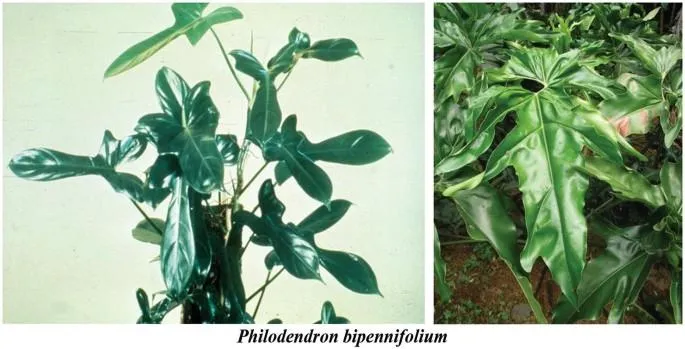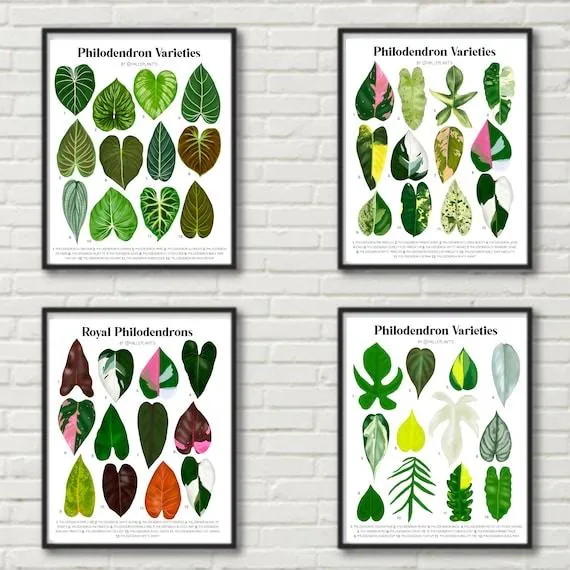An Introduction to Philodendron gloriosum and Its Varieties
The philodendron gloriosum is a beautiful vine in the Araceae family known for its large, heart-shaped leaves. Native to the tropical rainforests of West Africa, this philodendron has become a popular houseplant due to its dramatic foliage. Within the gloriosum species, several distinctive varieties have been identified based on leaf markings and growth habits. In this article, I’ll break down the main gloriosum types and share some tips for caring for these stunning plants based on my years of experience growing indoor tropicals.
Philodendron gloriosum
The standard gloriosum has dark green leaves that can grow up to 12 inches long. While the leaves of young plants may be unmarked, mature foliage will develop thin, silvery veins and splashes. From my experience, the standard gloriosum is among the hardiest varieties and grows at a moderate pace. Its leaves hold their shape well and darken as they age. This classic gloriosum makes a lovely accent plant that thrives in medium to bright indirect light.
Philodendron gloriosum ‘Brazilian’
The ‘Brazilian’ gloriosum stands out with leaves featuring darker, thicker veins than the standard type. The veins tend to be more prominent overall, giving the leaves a distinct marbled appearance. Kind of like dark veins in white marble if that makes sense. In my collection, the ‘Brazilian’ gloriosum is a faster grower than average. Its dramatic foliage makes quite the statement and I’d say it’s worth keeping an eye out for this variety if you come across it. They basically shine in any plant corner!
Philodendron gloriosum ‘Cream’>
As its name implies, the ‘Cream’ gloriosum features leaves with a lovely pale cream variegation. The cream patches tend to be concentrated along the veins and edges of the leaves. In my experience, gloriosum varieties with extensive light variegation require a bit more care. Make sure the ‘Cream’ receives bright, indirect light to prevent the variegation from reverting to solid green. It may also grow a little more slowly than non-variegated types. But the creamy splashes on its huge leaves are absolutely stunning in my opinion!

Philodendron gloriosum ‘White Knight’
The dramatic ‘White Knight’ takes variegation to the next level with leaves that are predominantly white splashed with small sections of green. I’d rank this among the more difficult gloriosum varieties to care for due to its extensive light needs. Place it in a south or west-facing window and protect it from direct sun, which can scorch the delicate white patches. Although growing conditions for a ‘White Knight’ are sort of challenging, the payoff is huge when you succeed in keeping its ethereal foliage healthy. Truly one of the coolest Gloriosum types if you ask me!
Philodendron gloriosum ‘Goddess’
A relatively new gloriosum discovery, the ‘Goddess’ form features heart-shaped leaves splashed with shades of mint, cream, and pale green. Its subtle coloring gives the impression of leaves covered in powdered sugar. In my hands, the ‘Goddess’ appreciates the same growing conditions as other variegated gloriosum. Make sure it receives ample, indirect light to maintain the gorgeous leaf pattern. While some find the powdery tones understated, I find its delicate beauty quite stunning. It’s a welcomed change from louder variegation.
Care Tips for Philodendron gloriosum
Now that we’ve covered the main gloriosum varieties, here are some general care recommendations based on my experiences growing them:
- Light: As tropical vines, gloriosum thrive in medium to high indirect light. South or east-facing windows work well. Too little or intense direct sun can cause leaf damage.
- Water: Keep the soil lightly moist but not soggy. Allow the top inch to dry out between waterings. Gloriosum are susceptible to root rot in overly wet soil.
- Humidity: These vining plants appreciate moderate to high humidity around 50-60%. Use a pebble tray or humidifier especially in drier indoor climates.
- Fertilizer: Feed monthly in the spring and summer with a dilute water-soluble fertilizer. Gloriosum aren’t heavy feeders and too much can cause leaf burn.
- Pruning: During the growing season remove any developing side shoots to direct energy into the main vine. This keeps growth robust but compact over time.
- Repotting: Repot gloriosum annually in the spring before new growth begins using a well-draining potting mix. Vibrant new foliage is usually a sign it’s time for a size up.
Overall, gloriosum are graceful, magnificent plants that both novice and expert collectors can enjoy. With the right care tailored to each variety’s needs, these vines will reward you with giant, sculptural leaves for many years to come. Navigating their preferences becomes easier over time from trial and error. So don’t get discouraged if your first glorious doesn’t cooperate – just keep loving it and learning.

I hope this comprehensive breakdown of gloriosum types and caring tips has helped answer your questions! Gloriosum vines are amazing indoor jungle additions in my opinion. Feel free to reach out if you have any other questions down the line. Happy growing!
Philodendron gloriosum types comparison
| Type | Leaf Color | Growth Rate | Care Difficulty |
|---|---|---|---|
| Green | Dark green | Moderate | Easy |
| Pink Splash | Dark green with pink around edges | Slow | Intermediate |
| Green Imperial | Dark green center fading to lime green edges | Moderate | Easy |
| Black Cardinal | Dark burgundy leaf edges fading to black center | Slow | Difficult |
| White Knight | Green leaves with white variegation | Slow | Difficult |
FAQ
-
What are the main types of philodendron gloriosum?
There are basically two types of philodendron gloriosum plants: moonlight and limelight. The moonlight variety has larger leaves that are dark green with creamy yellow edges. The limelight has similar coloring but smaller leaves that are completely bright yellow.
-
How fast do they grow?
Philodendron gloriosums can grow fairly quick, maybe around a foot per year. But their growth rate depends a lot on light and care conditions. With plenty of sunlight and fertilizer, they may grow even faster. In low light, they’ll grow more slowly of course. So their pace seems to vary quite a bit plant by plant.
-
What kind of care do they need?
In terms of care, these philodendrons like moist soil but good drainage. You’ll want to water whenever the top inch or so starts to dry. They also appreciate bright, indirect sunlight. Too much direct sun may burn the leaves. Perhaps give it filtered light if placed near a window. Fertilizing monthly in the growing season also helps.

-
Do they tolerate low light?
Although they thrive in bright light, philodendron gloriosums can kind of tolerate low light conditions. The leaves may get smaller and grow more slowly in low light. But they won’t die as long as they get some indirect sunshine during the day. Mine has survived in a weird corner getting only north-facing light. It’s not stunning but still kicking. So they seem pretty resilient as houseplants go.
-
When do they flower?
You might be shocked but these philodendrons actually produce small white flowers occasionally! However, flowering is pretty rare in home conditions. They usually need lots of light and to be mature, like 4+ years old. Maybe mine will surprise me one day. The flowers don’t last long, just a couple weeks. But hey, it’s cool when a houseplant you never expect decides to blossom.
-
Are they toxic to pets?
Strongly speaking, yes philodendron gloriosums are toxic to dogs and cats if consumed. Their sap contains calcium oxalate crystals which can cause mouth pain and GI upset in animals. Keep them out of reach if you’ve got curious pets around. My friend’s dog once got hold of a leaf so we had to watch for symptoms thankfully none came. Still, better safe than sorry with pets.
On the other hand, while philodendron gloriosums can pose risks to furry friends, they make awesome houseplants for humans. Their big shiny leaves seem to glow, hence the “moonlight” name. Do you have any other questions about caring for these beauties? Let me know if you need help keeping your gloriosum growing amazing!

